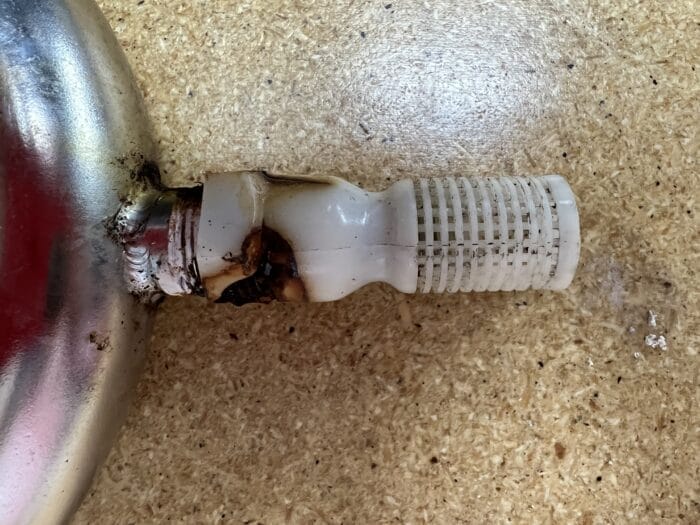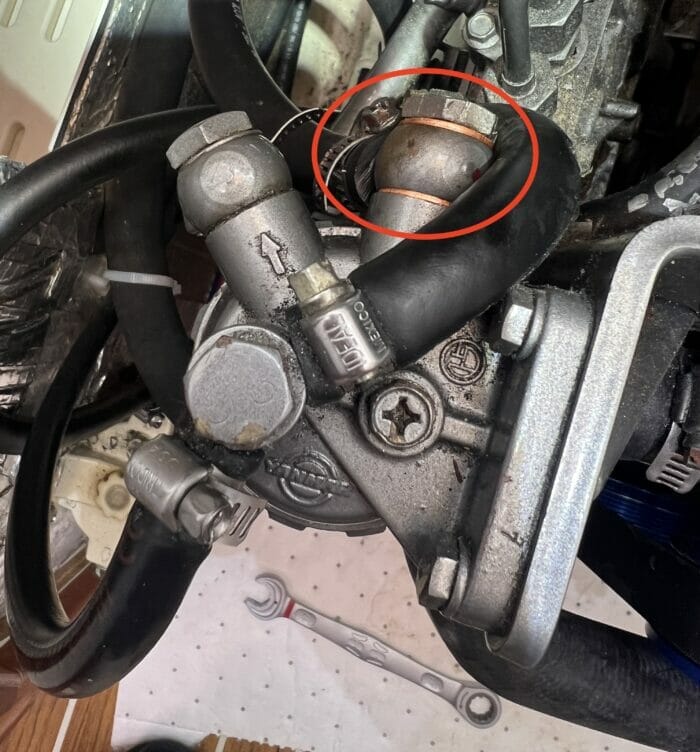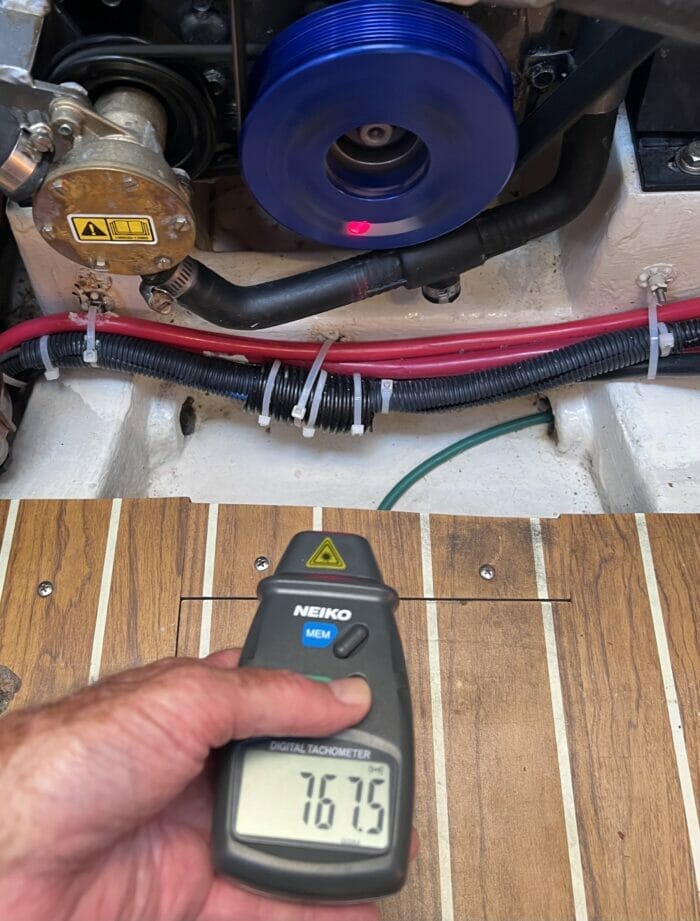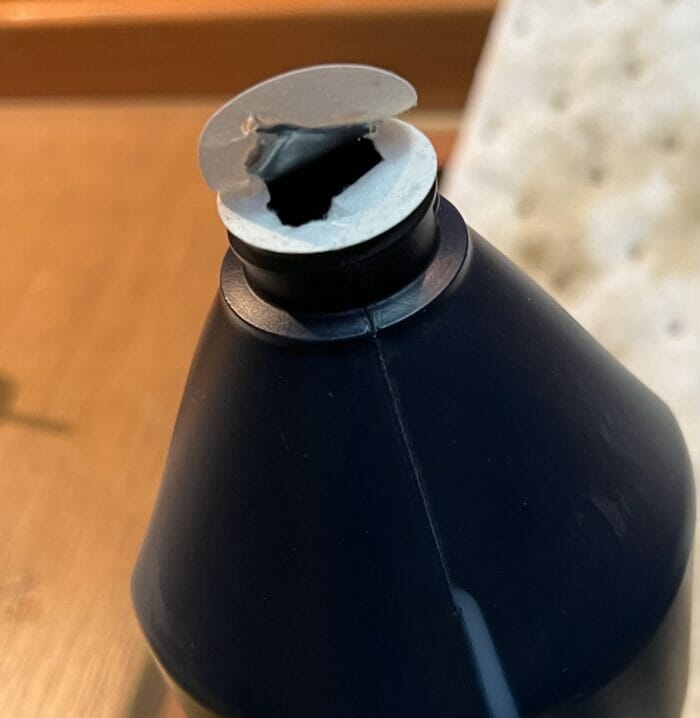
Tips, Tricks & Thoughts:
engine
-
Sometimes Doing The Right Thing Is Hard
28 CommentsReading Time: 2 minutesMembers
-
Don’t Be Fooled By A Coolant Overflow Tank
23 CommentsReading Time: 2 minutesMembers
-
Check The Siphon Break
9 CommentsReading Time: 2 minutesFree
The engine on most sailboats is installed at least partially below the waterline, consequently, with most exhaust systems, the only thing preventing the engine from flooding with water after it stops is the siphon break installed at the highest point in the raw-water cooling system.
That’s bad enough, but the other problem with siphon breaks is that they are usually installed in some inaccessible place, so on a lot of boats they don’t get any love from one year to the next.
This is also made worse because I have never seen an engine manual that calls for regular disassembly and cleaning of the siphon break.
Maybe the engine manufacturers want it to stick closed so our engines will flood and they can sell us new ones…not really, but I do sometimes wonder…particularly when I’m thinking about saildrives, the existence of which clearly proves how much engine manufacturers actually hate us owners.
Sorry, rant over.
Anyway, the photo above shows the state of the siphon break on our J/109 when we got her. Looks to me like no one had looked at it since the builder buried it high in the engine space 18 years before.
I figure that the only reason the engine had not flooded was because the J/109 has a shallow hull form, so the engine is higher in relation to the waterline than on most cruising boats.
Needless to say, I replaced it.
- I strongly recommend adding the siphon break to our annual maintenance checklists.
- If we don’t have our own checklist, it’s time to start one.
- There’s an alternative and better answer to back-siphoning than a break like the one above.
-
Carry Spare Banjo Fitting Washers
21 CommentsReading Time: < 1 minuteFree
Banjo fittings are ubiquitous on engines (there are a lot of them around, too), usually in the fuel system, but the fresh water cooling circuit often has a few as well.
And each of them has a small copper washer each side of the fitting that acts as a seal.
Here’s the thing: the washers are not reusable…but most people do, including many professional mechanics who should know better.
Which is why a lot of engines are plagued with leaks.
So it makes a lot of sense to carry a few of each size. We could buy them one by one or we can buy a lifetime supply over at McMaster-Carr.
Thanks to my friend Wilson, who warned me about this when we bought the J/109, so I had the right washer to hand when the engine started pissing diesel fuel.
-
Check Tachometer Accuracy
6 CommentsReading Time: 2 minutesFree
There are all kinds of good reasons to check our engine RPM, including making sure:
- We are not overloading before the engine warms up.
- We are not under-loading after warm up.
- To figure out fuel burn.
- To check that the prop is not under- or over-sized.
- To check that the engine has not lost RPM at wide-open throttle, an early sign of all kinds of things that should be fixed before damage is done.
But the problem is that tachometers can drift into inaccuracy.
And an even bigger problem is that if we change our alternator to a larger and more robust one, as many of us cruisers do, and most of us should, it’s likely that the tachometer will be wildly inaccurate afterward because the new alternator sends a different number of pulses per revolution.
Wait, there’s more. If we change to a serpentine belt, again as we should, that likely changes the ratio between the crank shaft and alternator RPM, making the inaccuracy even worse.
The good news is that handheld RPM counters are both accurate and relatively cheap.
And then once we know the actual RPM, it’s reasonably easy…OK, a pain in the ass…to recalibrate the tachometer.
Phyllis spent an hour crunched up in the cockpit locker poking at the little calibration button while I read the rapidly changing numbers and yelled “press”, “let go”, “press”.
Why an hour? Because I adjusted the wrong way…twice…but let’s not go there.
Worth it to have an accurate tachometer, though…at least as far as I’m concerned…not asking Phyllis.
You can usually find the calibration instructions for your tachometer online, but here’s a typical set of instructions.
Further Reading
-
Oil Change Danger
2 CommentsReading Time: < 1 minuteFree
We have a friend who was well into a voyage across the Atlantic when the oil pressure alarm went off on her engine.
She and her crew made all the usual checks but to no avail.
When they finally got to the Azores under sail and with no engine for charging, the mechanic found parts of the seal from a bottle of oil blocking the lube oil pump pickup tube.
My guess is that someone had let these fragments drop into the container of oil, or maybe a whole seal, a surprisingly easy thing to do, and then dumped the oil into the engine.
It truly is the little things that can get you. And when they do on a voyage it sucks ten times more.
This kind of thing is one of the many reasons I have always done all the routine maintenance on critical systems like the engine myself, and would have done so even if we could have afforded to pay someone else.
Sure we all hope that the guy in the boatyard tasked with doing oil changes would be careful not to let this happen, and strain the oil if it did…






